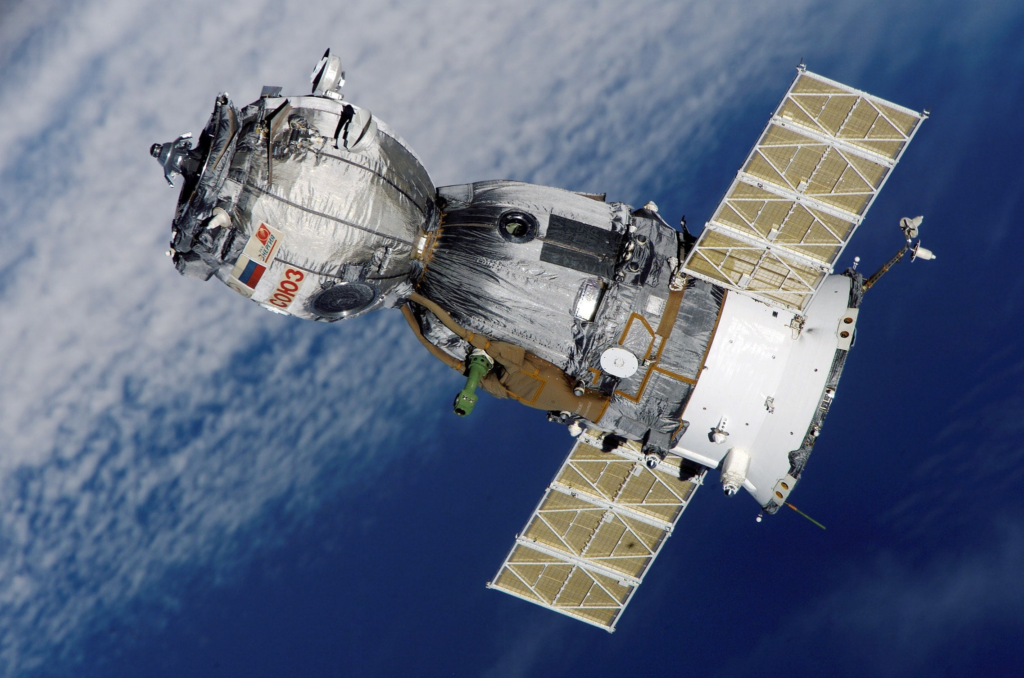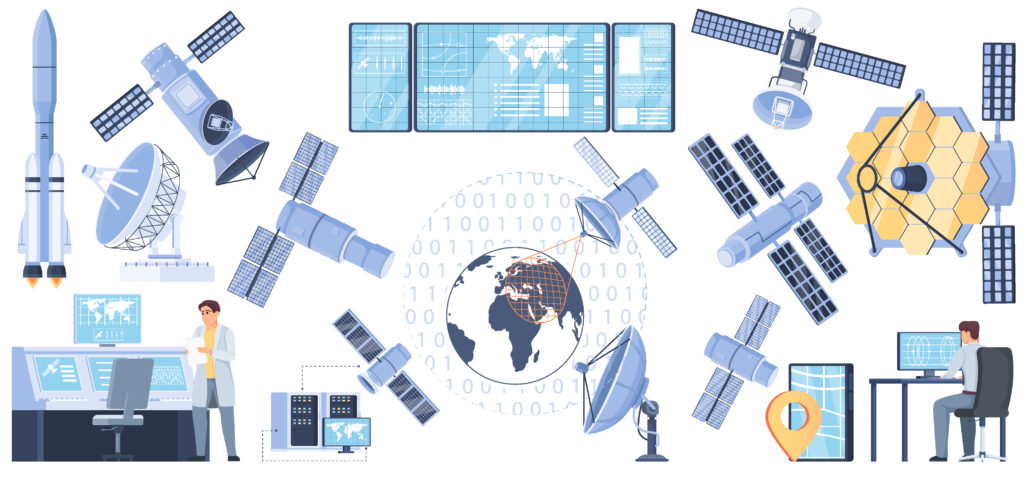Discover the power of Satellite Solar Panels – harnessing clean, renewable energy from space to revolutionize the way we power our world. Learn how these advanced solar technologies are shaping the future of sustainable energy solutions. Explore their benefits, efficiency, and potential impact on global energy sustainability. Join us on a journey into the innovative world of Satellite Solar Panels and their promising role in building a greener tomorrow.”

Table of Contents
Introduction:
Have you ever looked up at the night sky and wondered about the incredible technology that orbits our planet? Satellites, those fascinating objects hovering high above us, play a crucial role in our modern world. They enable communication, navigation, and even weather forecasting. But have you ever considered how these marvels of engineering power themselves? The answer lies in the unbounded energy of the sun. In this blog, we’ll embark on a journey through space to discover the extraordinary world of satellite solar panels and how they harness the sun’s energy to keep our satellites running smoothly.
Harnessing the Sun’s Energy in Space:
Imagine being surrounded by darkness, hundreds of kilometers above the Earth’s surface, with no power outlets in sight. How would you keep your devices running? Solar panels come to the rescue! Satellite solar panels are specifically designed to capture the sun’s radiant energy and convert it into electrical power. These panels consist of photovoltaic (PV) cells, which absorb sunlight and generate electricity through the photovoltaic effect.
But why solar power in space, you might ask? Well, in the vacuum of space, sunlight is abundant and unobstructed by the Earth’s atmosphere. This makes it an ideal energy source for satellites that need to operate for extended periods without the luxury of refueling. By harnessing the sun’s energy, satellite solar panels provide a consistent and renewable power supply for a variety of critical operations.
How Satellite Solar Panels Work:
Satellite solar panels work like miniature power plants in space. When sunlight reaches the panels, it excites electrons in the PV cells, creating an electrical current. This current is then harnessed and stored in batteries or directly used to power the satellite’s systems and instruments.
To optimize energy generation, solar panels are designed with highly efficient PV cells and specialized materials that can withstand the harsh conditions of space. The cells are often made of semiconductors like silicon, which have the remarkable ability to convert sunlight into electricity. The size and arrangement of solar panels vary depending on the satellite’s power requirements and the amount of sunlight available in its orbit.
Overcoming Obstacles in Space:
While satellite solar panels are an ingenious solution, they face some unique challenges in space. One such hurdle is the Earth’s shadow. Satellites orbiting the Earth pass through periods of darkness when they enter the planet’s shadow. During these eclipses, solar panels cannot generate power. To overcome this, satellites are equipped with backup power systems, such as rechargeable batteries, which store excess energy generated during daylight for use during eclipse periods.
Another challenge arises from space debris. The vast expanse above our planet is littered with fragments of old satellites and other debris. Even small pieces can cause significant damage if they collide with solar panels. To mitigate this risk, solar panels are often protected by sturdy covers or positioned in a way that minimizes the chances of collision. Additionally, engineers continuously monitor space debris to ensure the safety and longevity of satellites.
Benefits and Future Possibilities:
Satellite solar panels offer numerous benefits that extend beyond powering satellites. By relying on solar energy, they reduce the need for non-renewable resources and minimize the carbon footprint associated with traditional energy sources. Moreover, as technology advances, solar panels are becoming more efficient, compact, and cost-effective, making space exploration and satellite missions more sustainable.
In the future, satellite solar panels may play an integral role in endeavors like deep space exploration and interplanetary missions. By providing a reliable and renewable source of energy, they could enable prolonged expeditions to distant celestial bodies, offering exciting possibilities for scientific discovery and expanding our understanding of the universe.
Conclusion:
Satellite solar panels epitomize the marvels of human ingenuity and our ability to harness the immense power of the sun. These compact powerhouses floating in space allow satellites to fulfill their vital roles while reducing our dependence on fossil fuels. As we gaze upward and appreciate the wonders of the night sky, let’s not forget the silent heroes that silently orbit above us, basking in the sunlight and paving the way for a brighter, sustainable future.
FAQ (Frequently Asked Questions):
- How do satellite solar panels generate electricity?
- Satellite solar panels generate electricity by using photovoltaic (PV) cells. These cells absorb sunlight and convert it into electrical energy through the photovoltaic effect.
- Why are solar panels used on satellites? Solar panels are used on satellites because they provide a consistent and renewable source of power in the vacuum of space. Sunlight is abundant and unobstructed, making it an ideal energy source for satellites that operate for long durations without refueling.
- How do satellite solar panels work during eclipses? During eclipses, when satellites pass through the Earth’s shadow, solar panels cannot generate power. To address this, satellites are equipped with backup power systems, such as rechargeable batteries, which store excess energy generated during daylight for use during eclipse periods.
- How are satellite solar panels protected from space debris? Satellite solar panels are protected from space debris through various measures. They may be covered with sturdy shields or positioned in a way that minimizes the risk of collision. Continuous monitoring of space debris helps ensure the safety and longevity of satellites.

